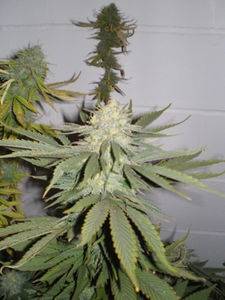B
BeAn
Ahh, i see...thanks for the heads up.



DocLeaf said:optional in vegetative period:
Urine** (small cup)
* Alga C is a seaweed based micro supplement from ATA Organics.
**The ammonia nitrates really help to activate the tea[/I]
 pretty funny there. Great info there I use peruvian seabird and jamaican bat guanos in my teas,I use the blackstrap mollasses as well.
pretty funny there. Great info there I use peruvian seabird and jamaican bat guanos in my teas,I use the blackstrap mollasses as well. DonChron said:never knew wood ash any properties,plant growing for that matter..lol.so it's like natural perlite?
 it increases drainage and helps provide pockets where friendly bacteria can form.
it increases drainage and helps provide pockets where friendly bacteria can form. 
Dr Psycho said:As a person who has spent much of the last 20 years living "Off the Grid ïn remote Canadian Locales , it's often a whole days journey or more to score exotic treats like Jamaican Fruit Bat Guano, Coco Coir, and Marquesian Sea Bird Guano. I'm also cheap! The Idea of Paying 40 $ for 3 kilos of feces rankles me! So here are some local solutions that will yeild some fat buds with out a huge cash outlay.
Pigeon poop: Old Barns are rice sources its often mixed with old hay or straw and should be added to an active compost heap to kill weed seeds.
Barn swallow Guano, these birds are common on farms and eat a diet of 100% bugs. I place pieces of scrap plywood under colonys to catch the rich droppings, the clay from fallen nests is also a great soil addtitive. It's powerful stuff 1-2 large spoonfuls are enough for two gallons or 8 litres of tea-too much can burn!
Chicken Shit! Chicken Manure added to an active compost pile is a great source of phosporous!
Kelp from the beach should be washed with fresh water composted and used as a general tonic-my personal experience has been that seaweed boosts the frost resistance of plants.
Comfrey ; compost or tea made from this vigourous plant is a general tonic of trace minerals and potash. Many people have comfrey taking over there lawns and gardens and it is often available for the work of digging it up and removing it from your friends peony patch.
The whole biosphere is made of potetial nutrients , develop the skills to recognize the magical plant foods in your nieghbour hood!

Sam Slambam said:You seem to share the same ethic that permeate through the folks here in the organic threads...... self reliance.

60% ProMix HP + Mike
30% perlite
10% worm castings for micros and BB
To each gallon of this mix I add:
2 TBS/gal dolomite lime
1 TBS/gal blood meal
2 TBS/gal bone mean for P (flowering mix only)
1 TBS/gal kelp meal
I feed a microbial tea every watering with no nutes just EWC, LK, and molasses, to me this is a base.
Ingredients (these are for 4 gallons of water)
This is a base tea, you can water with this every watering.
4TBS of worm castings
4TBS of molasses
1-2TBS lquid seaweed
2TBS of liquid karma (optional, substitute for humic or fulvic acids)
To feed the plants you add to your base tea:
2-3TBS of either high N or P guano
Are you still using this mix Suby? If not, did you find anything wrong with it?I was chatting with Dman in another thread about coco vs peat and posted a new mix I'm messing with.
So far the mix has been really good, the texture and water retention of the final composted product is the best I've mixed.
4 parts Promix HP
2 parts Botanicare coco
2 parts perlite
2 parts worm castings
I ammended with dolomite at 1.5TBS per gallon, and I went very heavy on a new organic blend that's like 4-10-5, a mix of fish meal, rock phosphate, kelp, I'll post more about this later but it's nothing special, I am trying it because it has fish meals in it which didn't smell in the final soil.
Suby, i have a couple questions if you don't mind. Do you not use any P in veg?
In the first quote you say you water w/ a tea of EWC, LK, and molasses every time. In the second you say the base tea you can water w/ has all the same except liquid seaweed too. Can you/do you water with the liquid seaweed/soluble kelp in every tea, every watering? Also i noticed you seem to use less EWC then i've typically seen in these forums, like compared to B1's recipe. It seems like some people use more EWC and less molasses, while others use less EWC and more molasses. What's your take on this?
I really like how you use some dry ferts in the soil and feed with teas instead of only using soil amendments or just feeding teas. Sorry for all the questions, i hate being the new guy.:smile:
Are you still using this mix Suby? If not, did you find anything wrong with it?